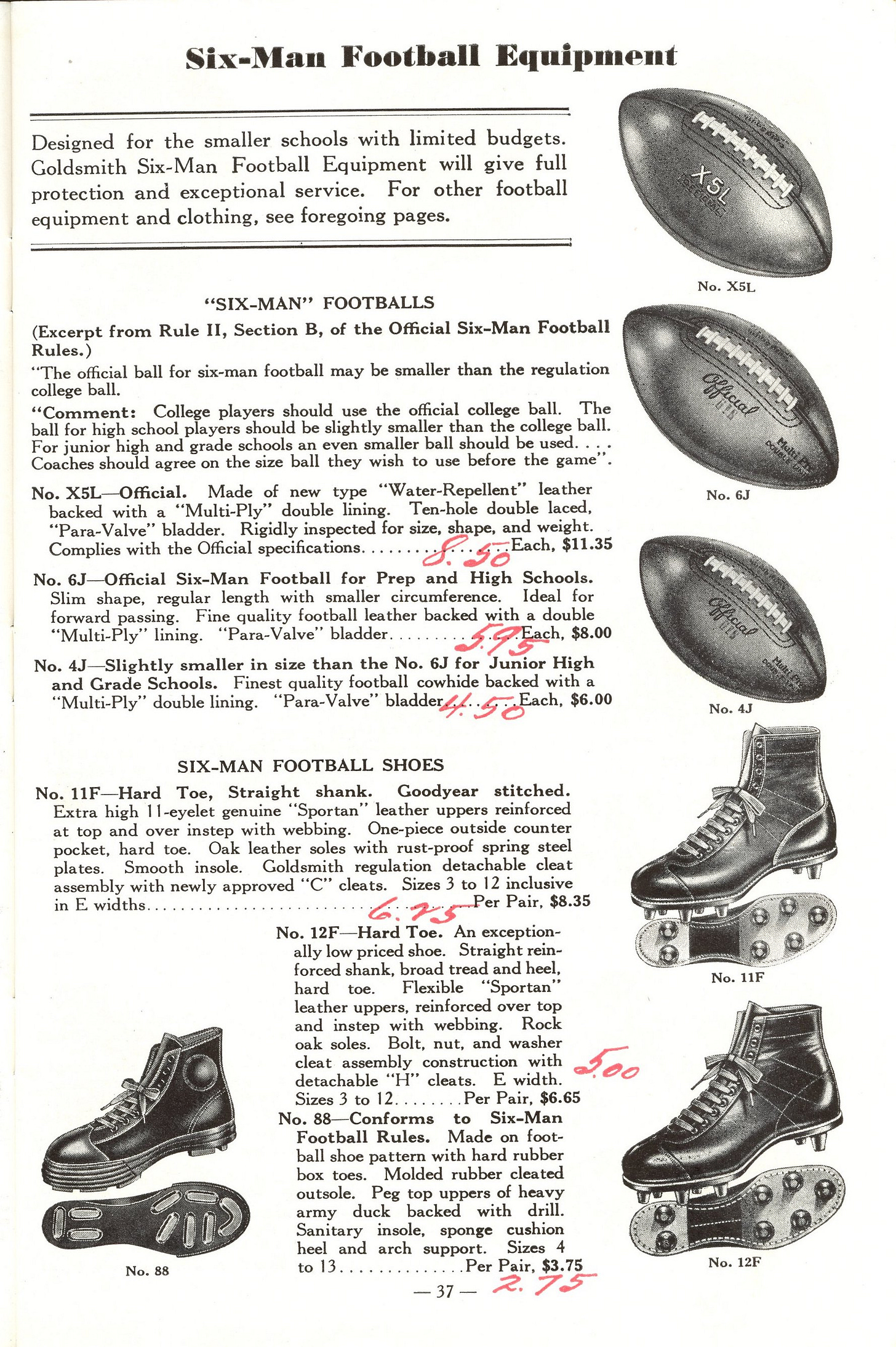The Origins of Six-Man Football
Stephen Epler was a teacher and assistant football coach at Nebraska's Chester High School in 1933 when he became concerned that many high schools lacked football teams, which he attributed to small enrollments and insufficient budgets.
In 1933, Nebraska had 505 high schools, but only 218 (43 percent) played football. Among the 317 schools with fewer than 100 pupils, only 68 played football. More broadly, there were 24,000 public high schools in the U.S., and while 18,000 played basketball, only 8,000 played football. Seventy percent of American high schools had fewer than 200 students, and nearly half had fewer than 100 students. Those numbers seem crazy now, but it was not until 1920 that America's urban population exceeded its rural population. In addition, it was not until the 1950s that many rural communities formed consolidated school districts.
Small schools also faced budget constraints, especially during the Depression. Football required a complete set of gear for each player, even those who tried out for the team and chose not to continue, so Epler designed a game requiring fewer players with rules allowing the use of less or lower-cost equipment.

Epler's solution to the problem was to create a version of football using fewer players -only six per side- that also reduced smashmouth play. As designed, six-man football followed the conventional rules other than those explicitly changed by the six-man rules. The fundamental six-man rules included:
A field 80 yards long and 40 yards wide with 10-yard end zones, so six-man players had about ten percent more square yardage than the regulation game. In comparison, Canadian fields have forty percent more square yardage per player than the regulation U.S. field
Kickoffs occur from the 20-yard line.
Teams must have three players on the line of scrimmage at the snap
Like conventional football before 1903, the player taking the snap must lateral or pass it to a teammate with the ball traveling at least two yards in the air.
The person taking the snap is an eligible receiver. Initially, the snapper was ineligible, but that rule no longer applies.
Teams must gain fifteen yards in four downs to retain possession.
To bring attention to the new game, Beatrice hosted a doubleheader involving four teams playing under the lights in September 1934. The two thousand attendees included many coaches and school officials, who came away impressed. The net effect of the rules changes was to eliminate one back, both guards and tackles, and dive plays with direct handoffs, so it was a wide-open game with each player performing a wider range of roles than usual
Ray O. Duncan, an Illinois faculty member and assistant freshmen football coach, published a "How To" book for six-man coaches in 1940. Duncan outlined basic offensive plays reflecting the T, Single Wing, and Short Punt formations used in conventional football at the time.
Likewise, Duncan included defensive formations suited for the plays shown above.
The game proved popular. By 1940, over 3,000 schools played interscholastic games, and another 5,000 played intramurally.
Returning to financial issues, Epler believed players could participate in the more wide-open game wearing less equipment, viewing shoulder pads as the only necessity. Although he recommended helmets when budgets allowed, his recommendation came before the NCAA required players to wear helmets in 1939. Sporting goods manufacturers joined the process by offering new equipment lines designed for six-man football, which, like their economy models, was designed like their premium equipment but used less expensive materials.
From the beginning, Epler argued that six-man football could be played wearing tennis or basketball shoes, in large part so players would not need to buy another pair of shoes. Still, the manufacturer offered six-man football shoes with canvas tops and rubber-cleated soles.
Today, high schools in thirty states play six-, eight-, or nine-man football, with the consolidation of small schools allowing most to play the eight-man game. In addition, Canada embraced reduced-player football, as do some locations overseas, with the more limited player specialization contributing to its popularity.
Note: I'll use this opportunity to salute my Dad, who attended a high school with twelve students (one classmate was his sister) for his freshman through junior years. As a senior, he transferred to a central school that did not field a football team, but, as a heady baseball catcher, he batted .180 for the fourth-best average on the team.
Postscript: The story originally indicated that Steve Epler taught at Beatrice High School when he devised six-man football. After acquiring Epler’s 1939 The Official Six-Man Football Guide and Rulebook, I’ve updated the story to indicate he was at Chester High, per the rulebook’s preface.
Other stories about versions of football besides the American eleven-man game can be found here:
Use the search function on the home page (image shown below) to find more articles.
Football Archaeology is reader-supported. Click here to buy one of my books or otherwise support the site.











Boyd Epley responded that his dad had seventeen siblings, so it is possible.
Batting average has been corrected. I've contacted Boyd Epley to see if there is a connection.